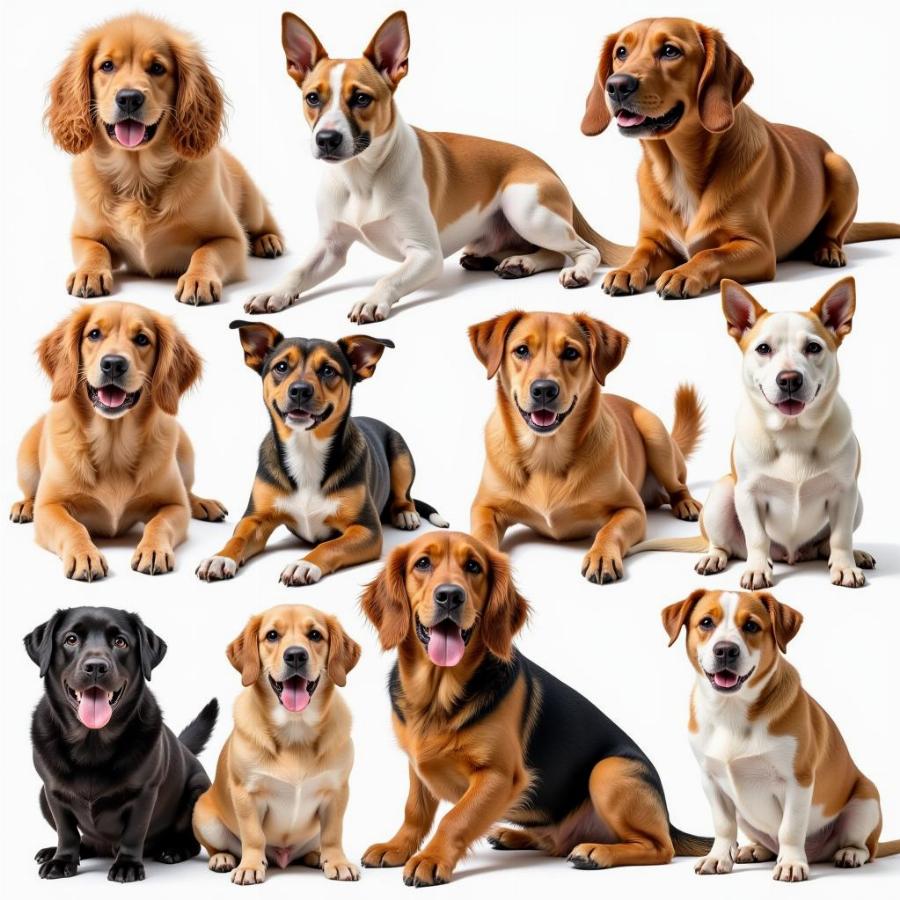Dogs experience the world differently than humans, and taste is no exception. While we revel in a complex symphony of flavors, our canine companions have a more simplified palate. So, how many taste buds do dogs have? The answer is significantly fewer than humans. While we boast around 9,000 taste buds, dogs have only about 1,700. This difference plays a key role in shaping their dietary preferences and how they perceive food.
Decoding the Canine Palate: Fewer Taste Buds, Different Priorities
While the number of taste buds in dogs is less than ours, it doesn’t mean they don’t enjoy their food. Their sense of taste is simply tailored to their evolutionary needs as carnivores. They have taste receptors for sweet, sour, salty, bitter, and umami (savory), similar to us. However, the proportions and sensitivities of these receptors differ, reflecting their historical diet.
For example, dogs have a heightened sensitivity to meaty flavors, thanks to their umami receptors. This makes sense, considering their ancestral diet primarily consisted of meat. Their ability to detect subtle nuances in meaty flavors helps them identify nutritious food sources and avoid spoiled meat.
The Importance of Smell: A Dog’s Superpower
Although dogs have fewer taste buds, their sense of smell is incredibly powerful, and it plays a major role in how they experience food. Their noses contain up to 300 million olfactory receptors, compared to our meager 6 million. This extraordinary olfactory ability allows them to detect a vast array of scents and aromas that we can’t even begin to imagine.
When a dog approaches food, their sense of smell takes center stage, creating a complex sensory experience that goes far beyond what their limited taste buds can perceive. This is why a dog might be attracted to something we find utterly repulsive – they’re experiencing a world of scents we can’t access.
Why Do Dogs Have Fewer Taste Buds Than Humans? Evolution’s Role
The number of taste buds a species has is often linked to their dietary needs and evolutionary history. As primarily carnivores, dogs evolved to prioritize the detection of meaty and savory flavors, rather than the wide range of tastes enjoyed by omnivores like humans. Their survival depended on identifying safe and nutritious meat sources, and their sense of smell became their primary tool for this purpose.
Does the Breed of Dog Affect the Number of Taste Buds?
While all dogs have significantly fewer taste buds than humans, there might be subtle variations between breeds. However, there’s no definitive scientific evidence to suggest a significant difference in taste bud count based on breed alone. Individual variations within a breed are likely more significant than differences between breeds.
 Dog Breeds and Taste
Dog Breeds and Taste
Conclusion: Taste and Smell – A Dog’s Culinary Symphony
Understanding how dogs perceive taste is crucial for responsible pet ownership. While they may not experience the same complexity of flavors as we do, their sense of taste, combined with their extraordinary sense of smell, creates a unique and rich culinary experience. By catering to their preferences and understanding their needs, we can ensure our furry friends enjoy a happy and healthy diet. Remember, a dog’s world is a world of scent, even when it comes to food.
FAQs:
- Do dogs have a sweet tooth? Yes, dogs can taste sweetness, but they have fewer receptors for it than humans.
- Why does my dog eat grass? While not fully understood, several theories exist, including seeking specific nutrients or alleviating an upset stomach.
- Can dogs taste spicy food? Yes, they can, but it can irritate their digestive system, so it’s best avoided.
- Why does my dog sniff everything before eating? They’re using their powerful sense of smell to gather information about the food.
- What are the signs of food allergies in dogs? Itching, digestive upset, and skin problems can all be signs of food allergies.
- Should I give my dog human food? Some human foods are safe for dogs, but many are toxic. Consult a vet for a safe list.
- How can I choose the best food for my dog? Consider their age, breed, activity level, and any health concerns. Consult your veterinarian for recommendations.
Further Reading:
Beaut Dogs is your go-to source for reliable, insightful, and in-depth information about the world of dog breeds. From understanding the unique characteristics and care requirements of various breeds to exploring the fascinating interplay of taste and smell in the canine culinary experience, Beaut Dogs empowers you to provide the best possible care for your furry companion. When you need support, please contact Email: [email protected] so that Beaut Dogs can answer in detail and accurately.